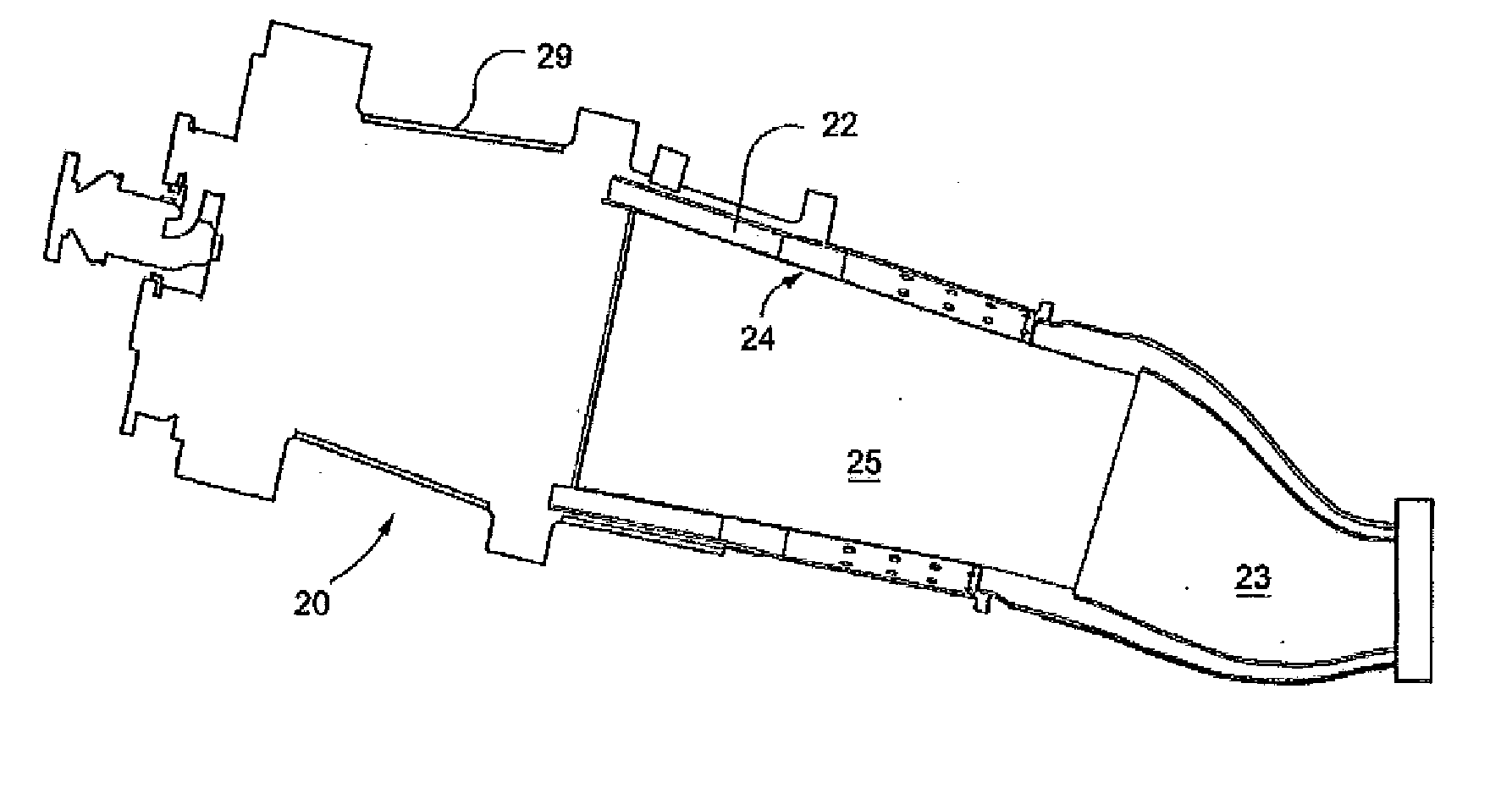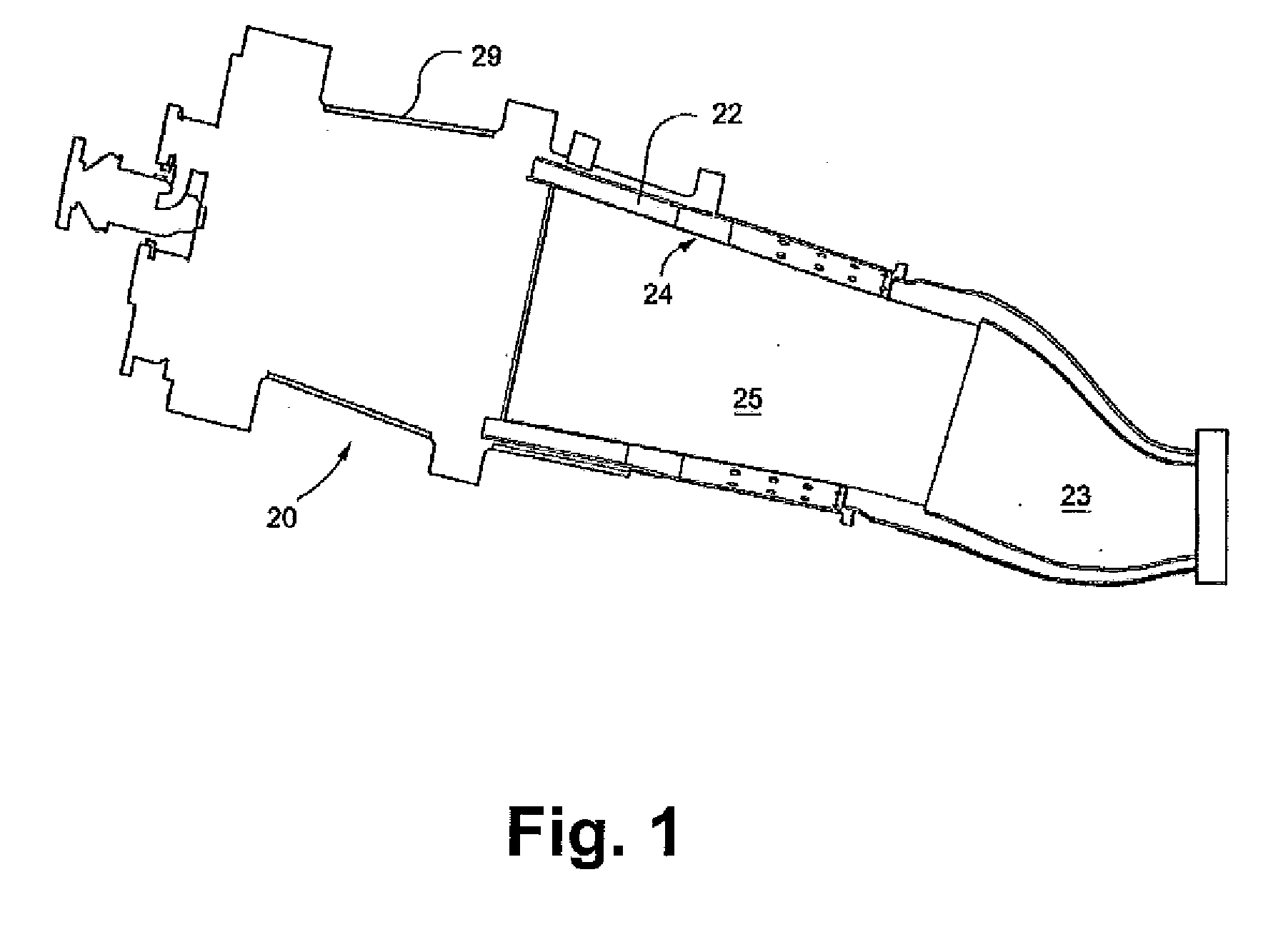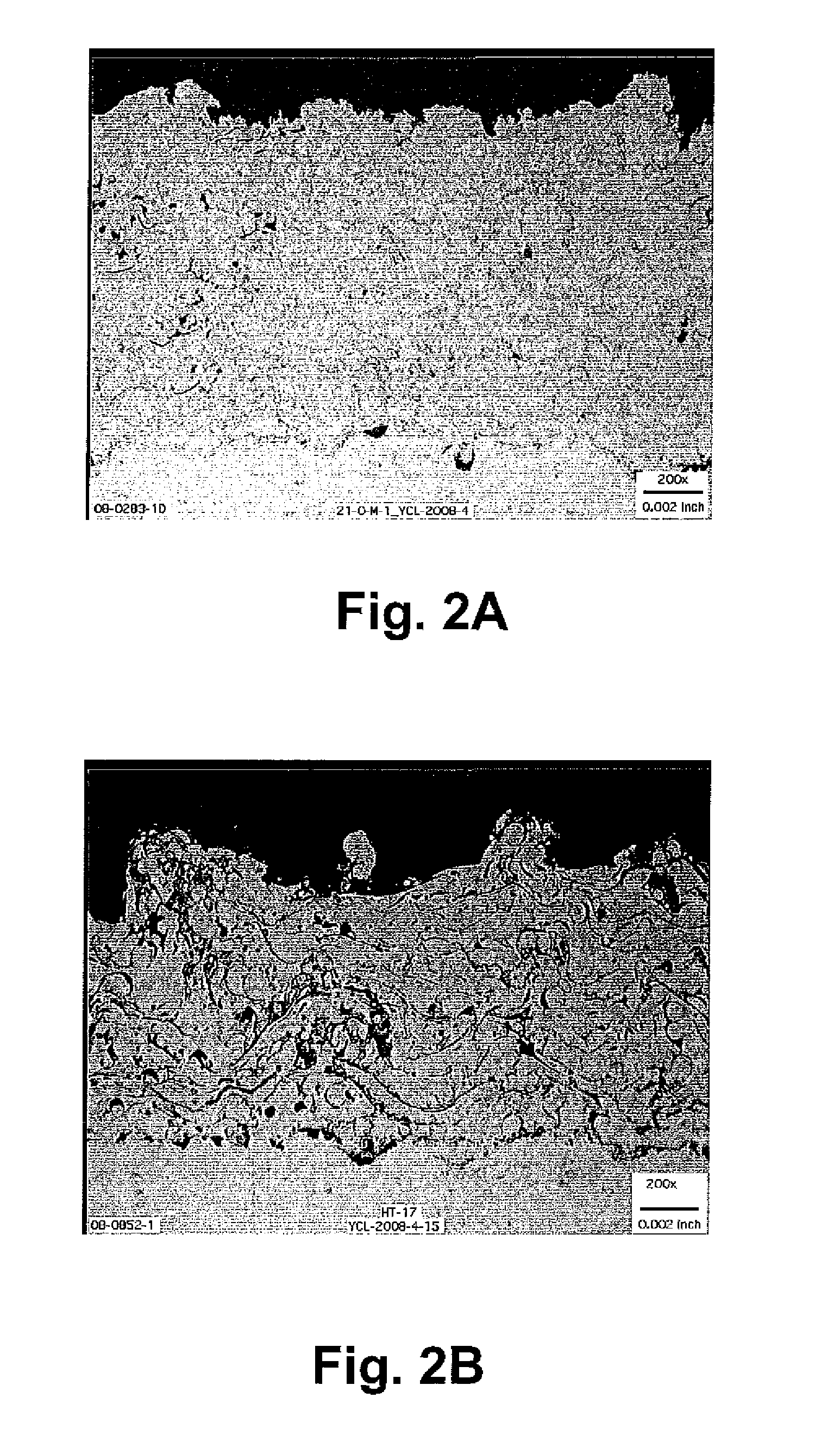Method of depositing protective coatings on turbine combustion components
a technology of protective coatings and combustion components, which is applied in the direction of superimposed coating process, turbines, lighting and heating apparatus, etc., can solve the problems of high temperature durability of engine components, high requirements for components, and high requirements for superalloys protected by overlay coatings. , to achieve the effect of reducing the number of requirements
- Summary
- Abstract
- Description
- Claims
- Application Information
AI Technical Summary
Benefits of technology
Problems solved by technology
Method used
Image
Examples
example 1
[0044]A Sulzer Metco 3 MB APS system was configured with a high velocity 704 nozzle and used to deposit a Praxair Co249-6 MCrAlY bond coat powder onto an inconel (IN718) test substrate. The Praxair powder is comparable to the Praxair NI-343 having a particle size distribution range of −45+10 and Sulzer Metco Diamalloy 4700 powder having a particle size distribution range of −45+15 um cited above. Particle temperature and velocity measured by a DPV sensor were, respectively, about 2200° C. and about 450 m / s. The substrate was then vacuum heat treated at 2050° F. for about 2 hours. Tensile bond strength of the HV-APS bond coat was then measured at about 10000 psi. The tensile testing was carried out according to ASTM C633-01 (the standard bond test). The bond coat had a density of about 95% of theoretical density.
example 2
[0045]A number of Ni-based (Rene N-5) superalloy test buttons were coated with a bond coat as described in Example 1. Each button had an outer diameter of about 1 inch (2.54 cm) and a thickness of about ⅛ inch (0.3 cm). A ceramic TBC barrier coat was then applied to the bond coat in an APS process with a Sulzer Metco OC3X APS system and a yttria stabilized ceramic powder comparable to the Sulzer Metco 240NS 8 wt % yttria stabilized zirconia powder having a particle size distribution range of about −11+125 μm discussed above.
[0046]The buttons were tested for TBC endurance in a furnace cycle test (FCT) by raising the sample temperature to 2000° F. in about 10 minutes in a button-loading CM furnace, followed by a hold period of 45 minutes; and then cooling to less than 500° F. in about 9 minutes. The cycle is repeated until more than 20% of the surface area of the ceramic coating spalls from the underlying surface. The average number of cycles of the test buttons in the FCT test until ...
example 3
[0048]The process described above in Example 2 was repeated with the same materials and process parameters on a different Ni-based superalloy (comparable to Hastelloy-X). The average number of cycles of the test buttons in the FCT test until TBC failure was about 330.
PUM
| Property | Measurement | Unit |
|---|---|---|
| particle velocity | aaaaa | aaaaa |
| particle velocity | aaaaa | aaaaa |
| particle velocity | aaaaa | aaaaa |
Abstract
Description
Claims
Application Information
 Login to View More
Login to View More - R&D
- Intellectual Property
- Life Sciences
- Materials
- Tech Scout
- Unparalleled Data Quality
- Higher Quality Content
- 60% Fewer Hallucinations
Browse by: Latest US Patents, China's latest patents, Technical Efficacy Thesaurus, Application Domain, Technology Topic, Popular Technical Reports.
© 2025 PatSnap. All rights reserved.Legal|Privacy policy|Modern Slavery Act Transparency Statement|Sitemap|About US| Contact US: help@patsnap.com



